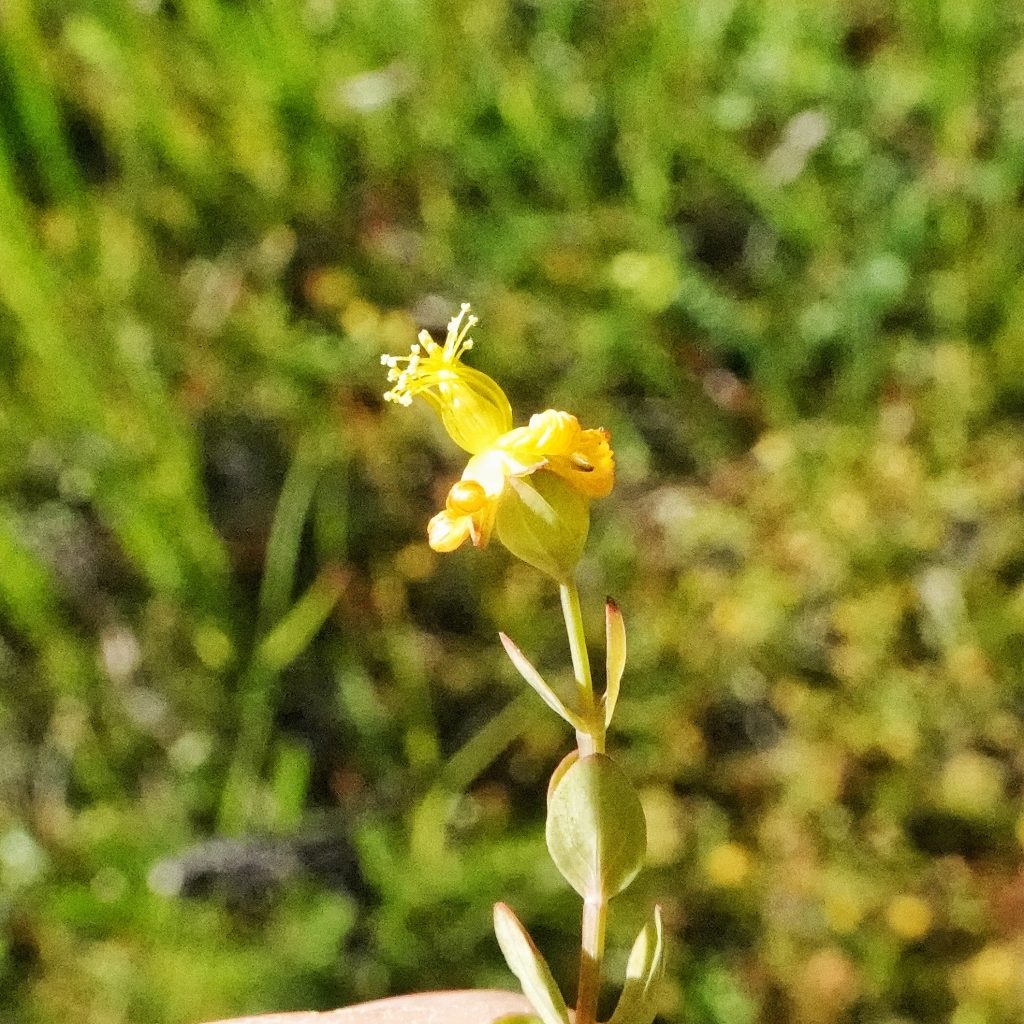
Hypericum anagalloides is one of the plants I found on the margins of the bog that I talk about in the blog ‘South Prairie’. It is in the family Hypericaceae and goes by the common names tinker’s penny, creeping St. John’s-wort, and bog St. John’s-wort. It is a pretty little plant, with emphasis on the little, having stems that are only 1-5” long and are usually laying mostly flat on the ground, with yellow flowers that are seldom more than 1/4” wide and are easily hidden by the grass and tiny plants. I can’t seem to find any information at all about this plant’s associations with any animals, or whether it has mycorrhizal or bacterial relationships for extracting minerals. But I’m sure those relationships are there, because, although organisms exist because they can, rather than because they fill a niche, nothing exists without interacting with its environment. But apparently no one has looked that hard at this species. Or possibly I just didn’t look hard enough myself.
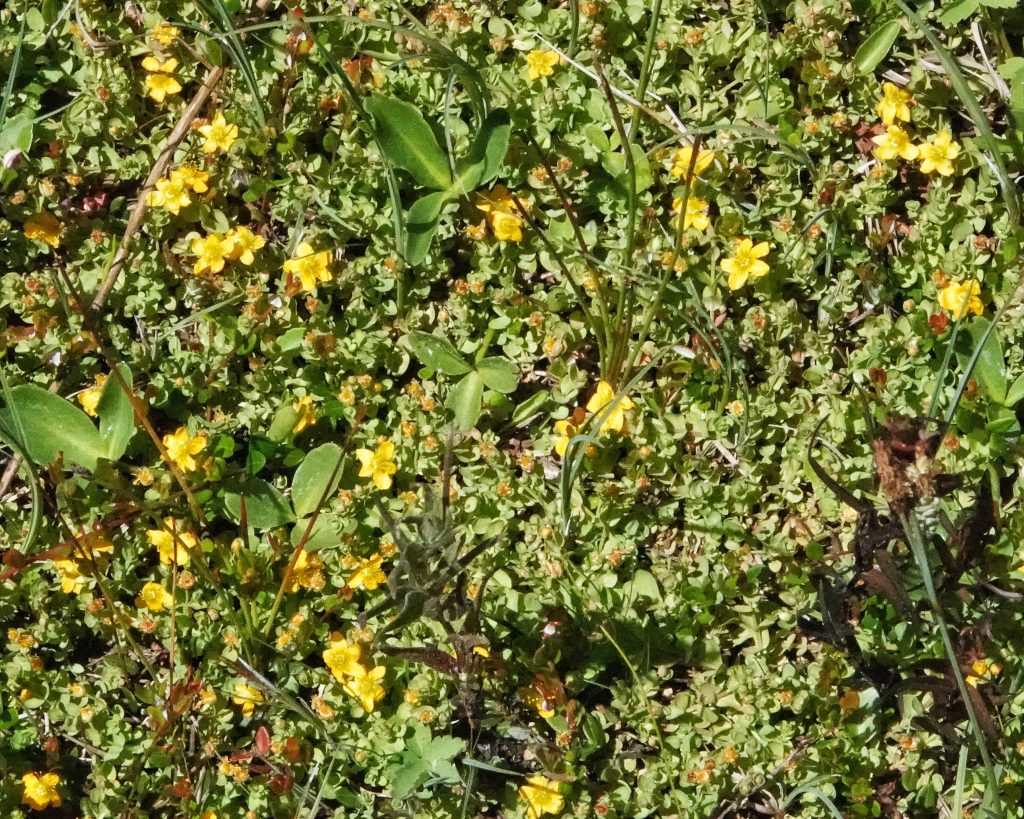
Description– Perennial that is 1-5” tall; “Small mats of numerous prostrate stems 1–3 in. long. Leaves small, with rounded tips, opposite, clasping stems. Flowers usually 1 but possibly to 15 atop short stalks, tiny, deep yellow to salmon, without spots, with many stamens.” Hypericum anagalloides | Tinker’s Penny | Wildflowers of the Pacific Northwest
Similar species– The introduced Hypericum mutilum has linear inflorescence bracts, whereas those of H. anagalloides are leafy; other Hypericum are larger, and are erect rather than prostrate.
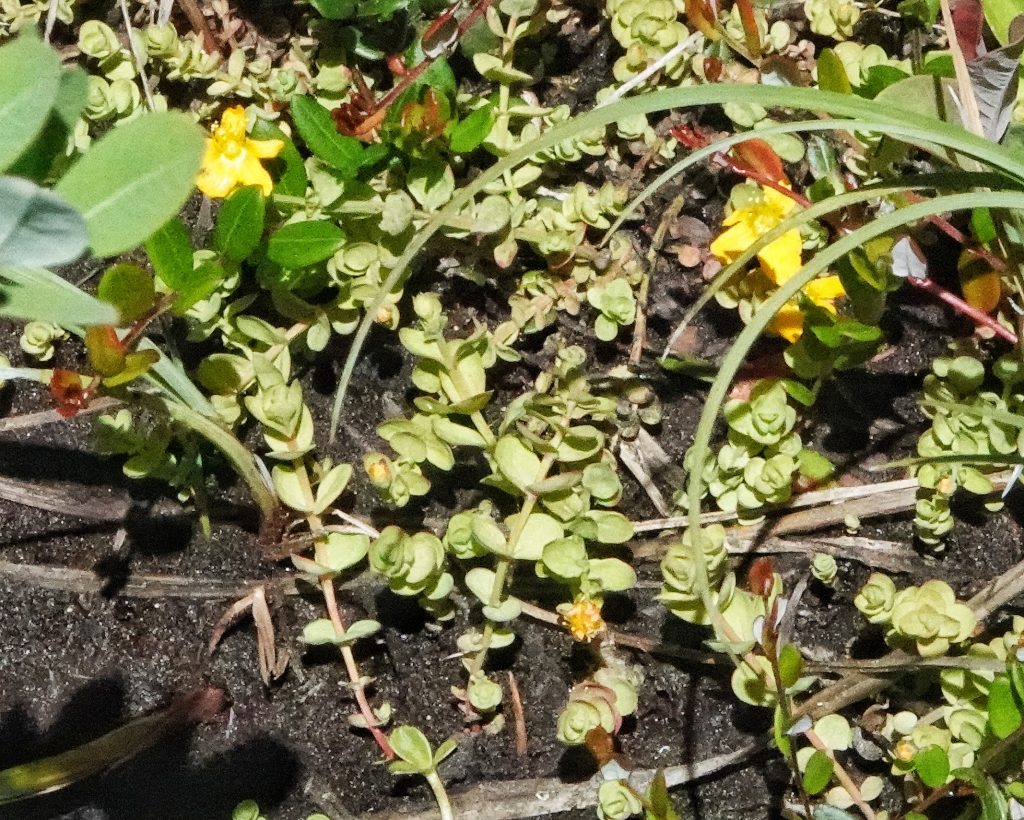
Habitat– Wet meadows, bogs, fens, marshes, wetlands, and other moist open areas.
Range– Native to western North America; found from the Rockies to the Pacific, from s BC to Mexico; in the PNW it is found from the east slope of the Cascades to the Pacific, and in sw Oregon/nw California, as well as in montane areas east of the Cascades.
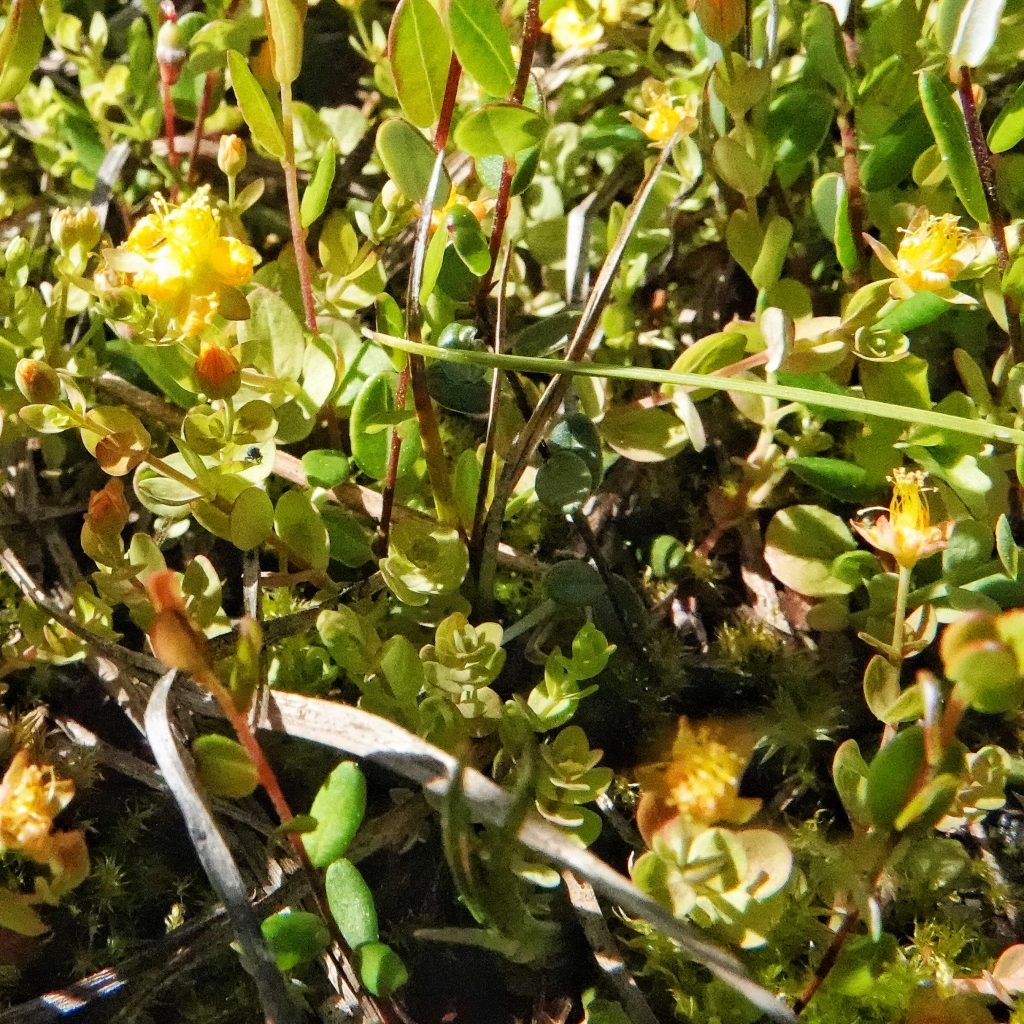
Eaten by– Oddly, I can find nothing at all on what eats this plant, but based on other Hypericum there must at least be leaf beetles and leaf mining flies that utilize it.
Reproductive timing– Blooms June through August
Ethnobotany– I can find no information on the ethnobotany of this species, nor on its use by herbalists or foragers.
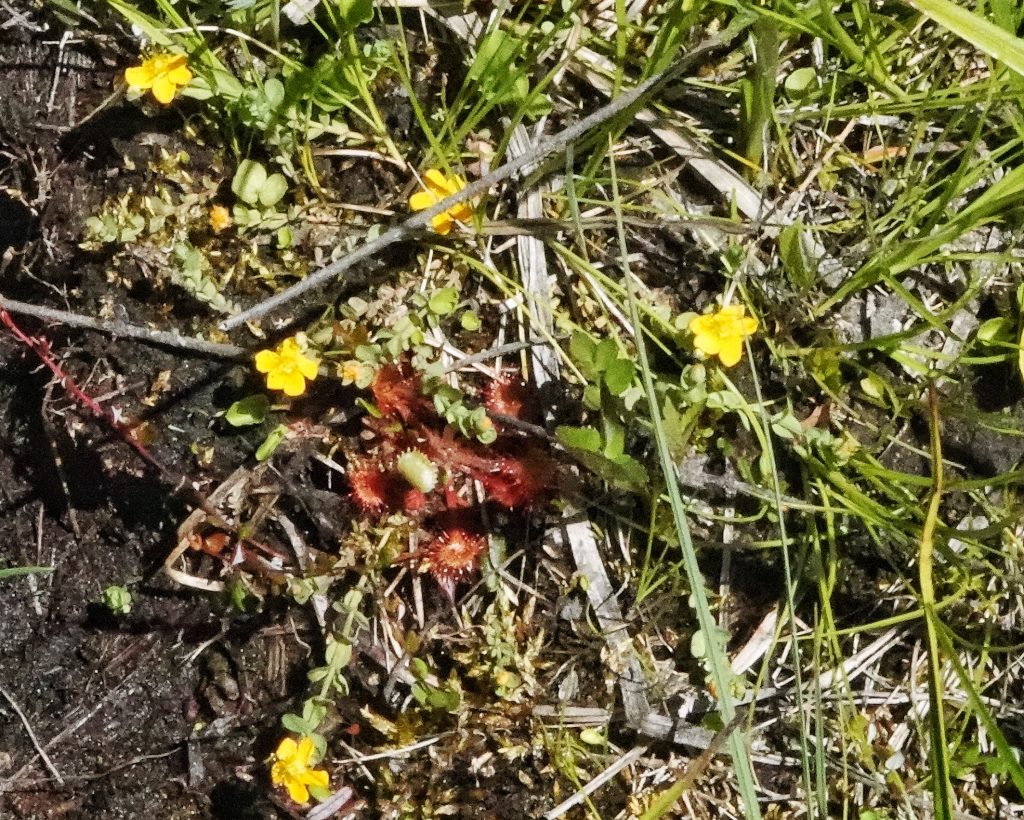
Etymology of names– Hypericum is “…derived from Greek hyper for “above” and eikon for “picture,” because plants were traditionally placed above religious images to ward off evil spirits.” Hypericum anagalloides | Tinker’s Penny | Wildflowers of the Pacific Northwest. According to Haskin in “Wild Flowers of the Pacific Coast”, the specific epithet anagalloides “…refers to its fancied resemblance to the pimpernel”, (Anagallis spp.).
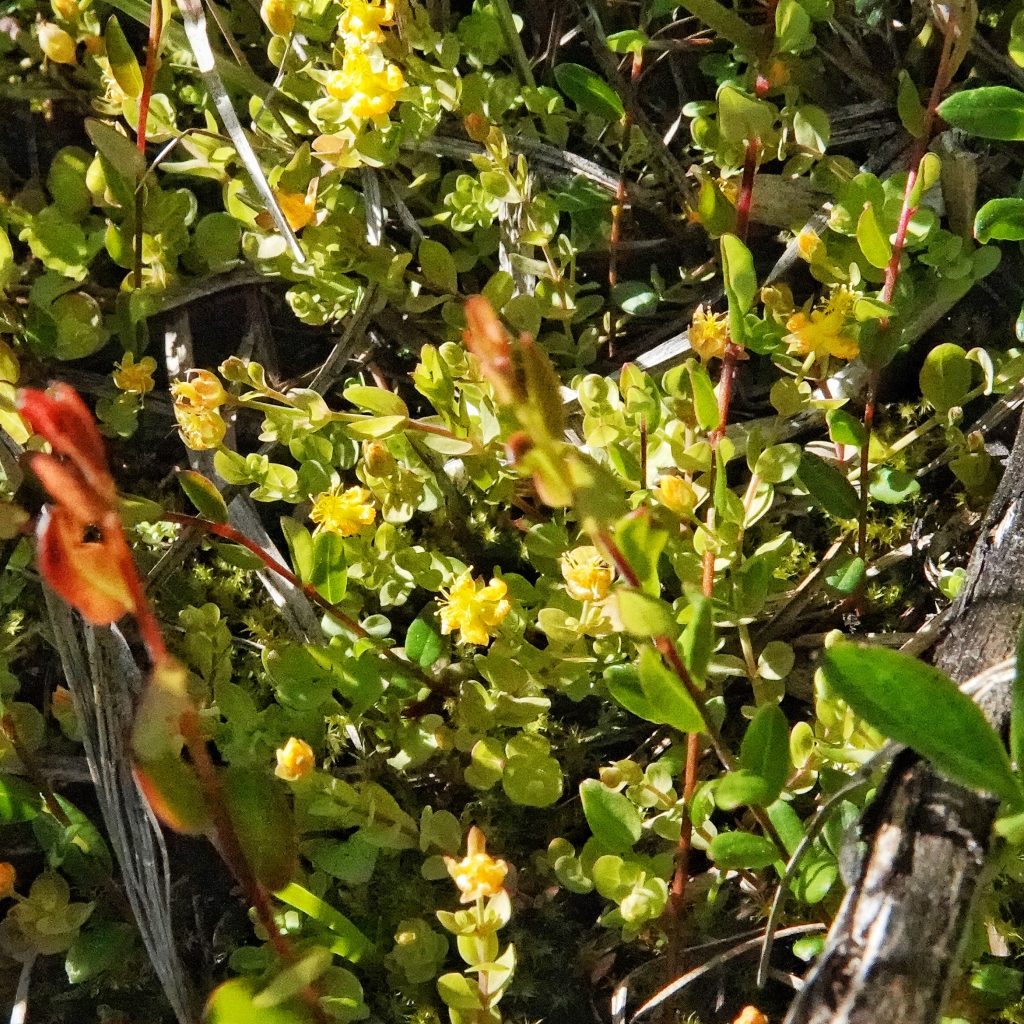
Hypericum anagalloides | Tinker’s Penny | Wildflowers of the Pacific Northwest
Tinker’s Penny, Hypericum anagalloides
Plant of the day: tinker’s penny | Flowers Of Marin
Hypericum anagalloides – Burke Herbarium Image Collection
Tinker’s-penny – Montana Field Guide
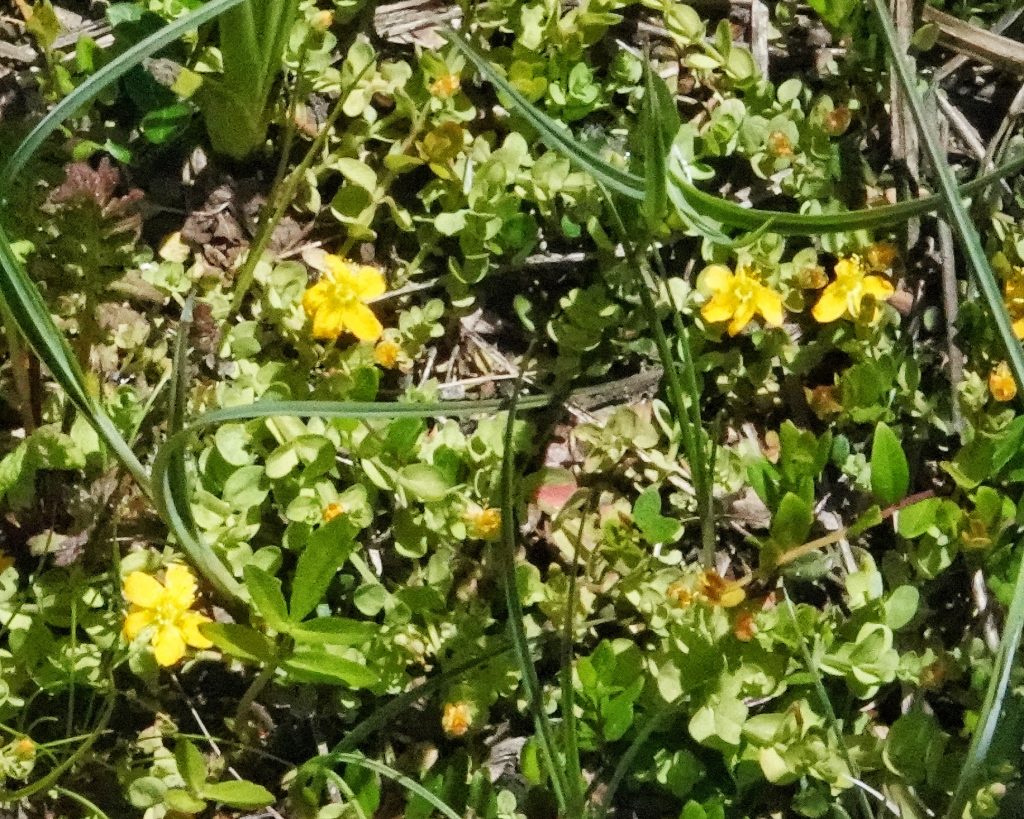
Hi Dan,
I’ve said for a long time, nature is lazy, she doesn’t make what she has no need for.
Yeah, you might be right about that, Steve😀
Thanks, Dan. Wonderful stuff.
Thanks for your appreciation, Brooke!